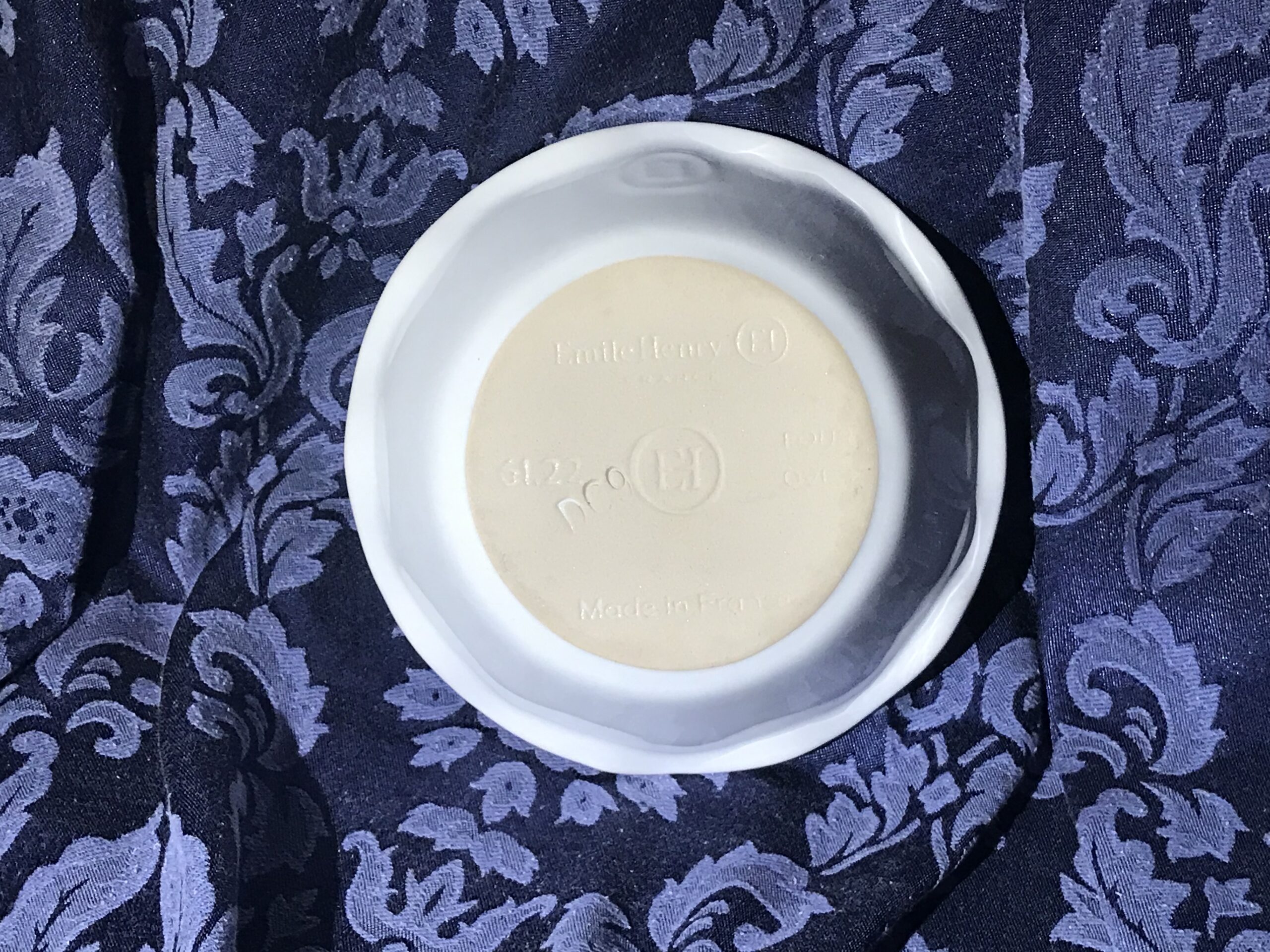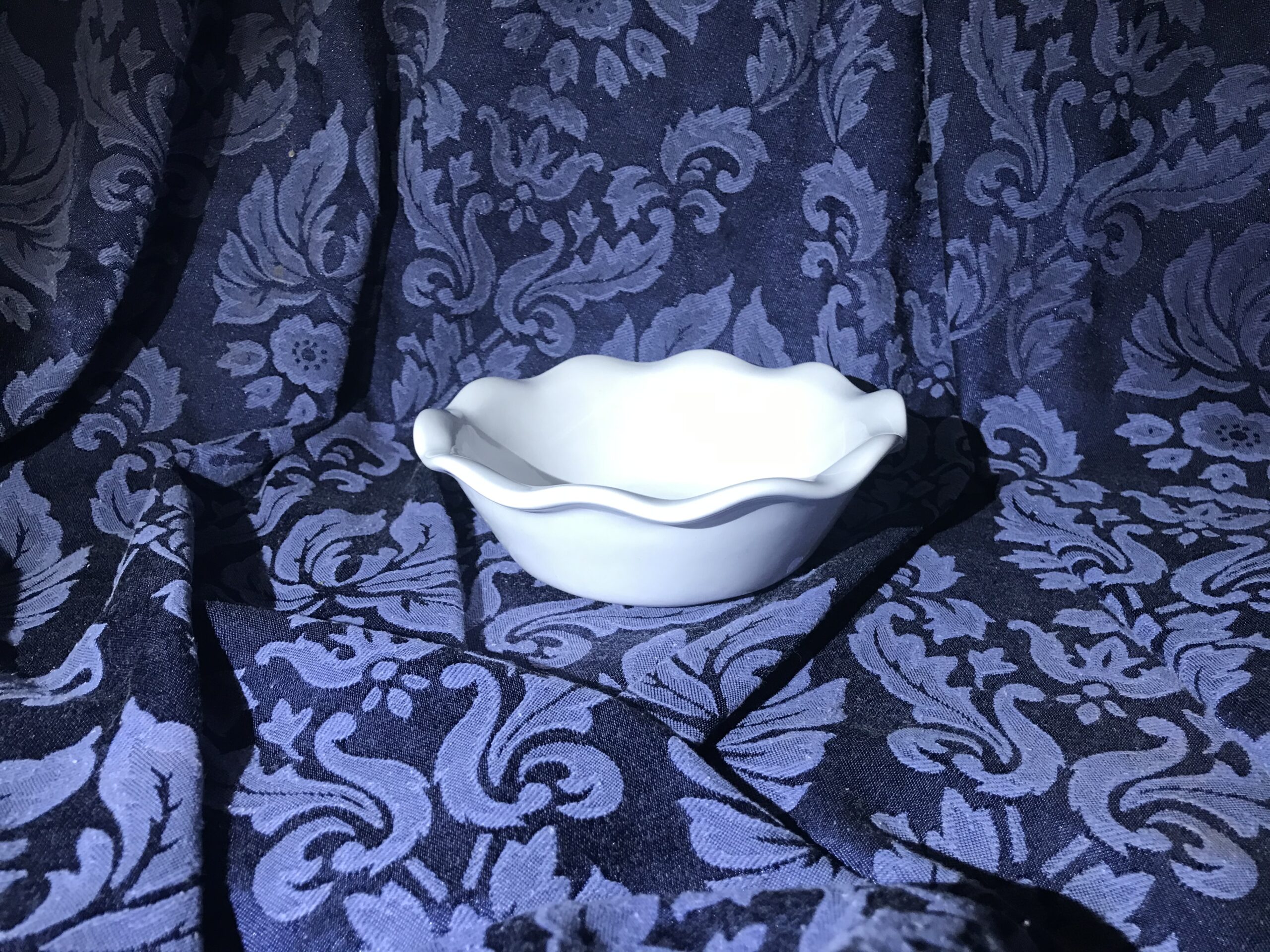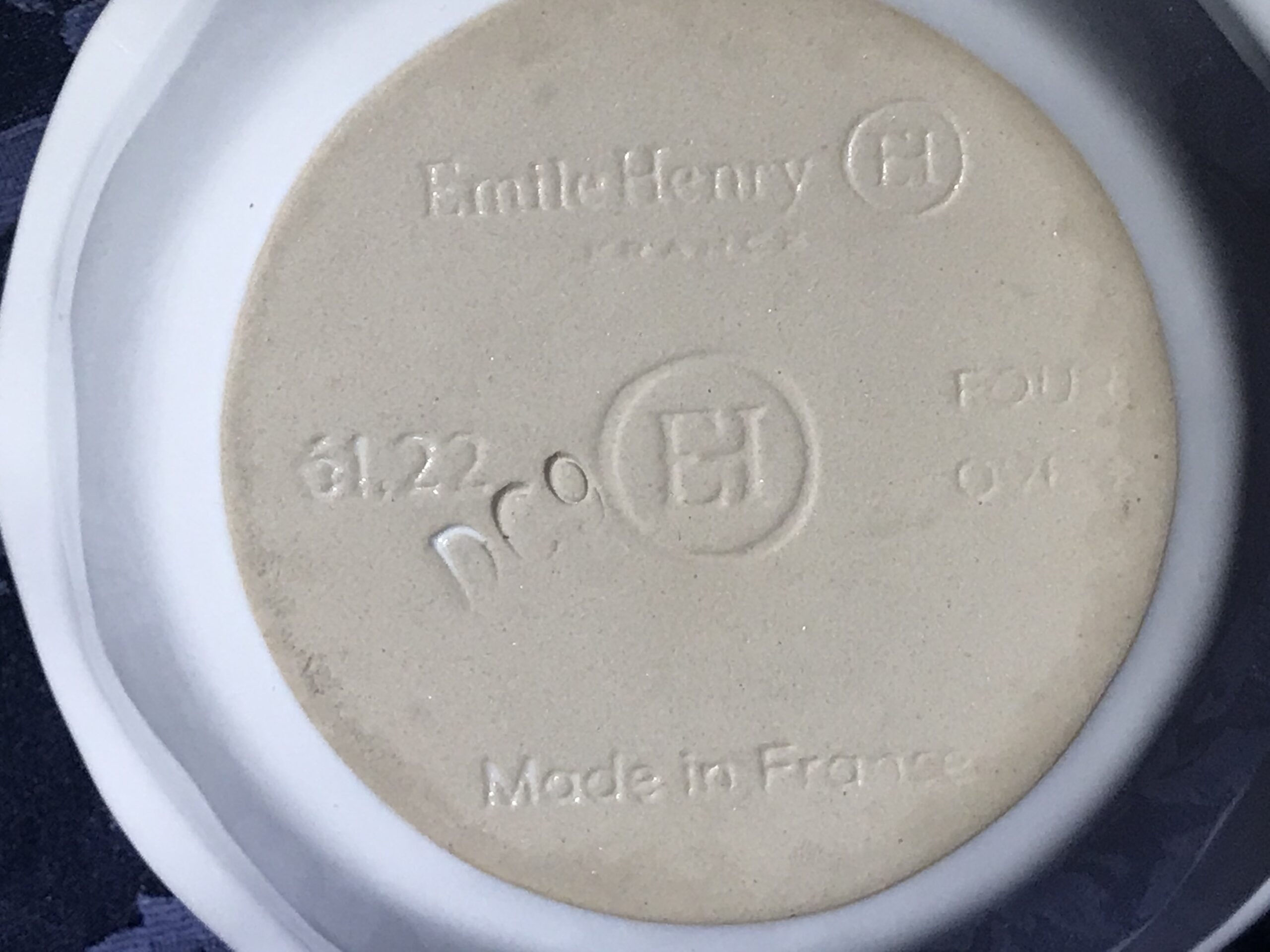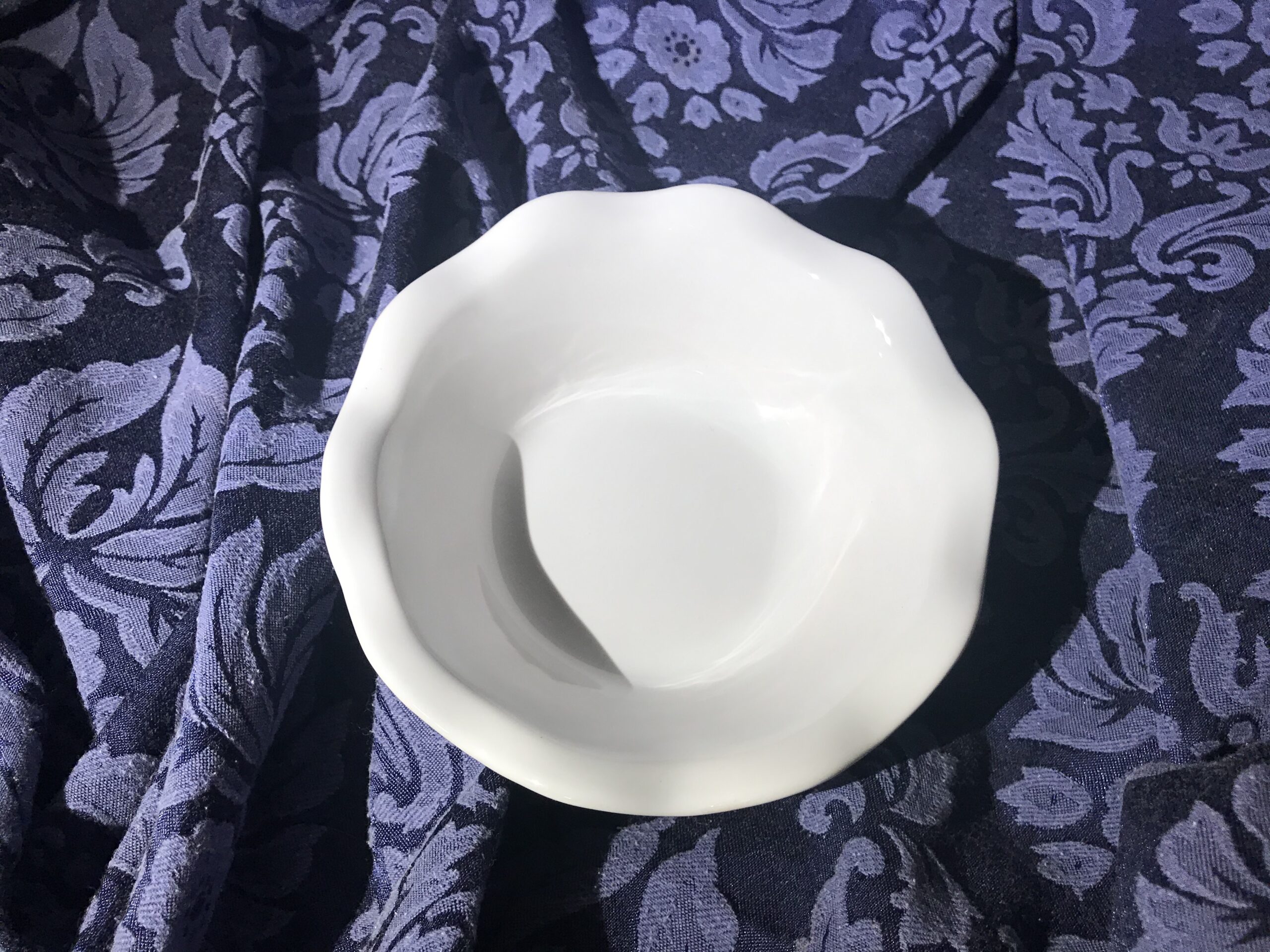Emile Henry white glazed small pie dish, made in France: 125 ppm Lead (likely non-leaching.) Please click for details.

 Posted: Saturday, March 14, 2020
Posted: Saturday, March 14, 2020
Introduction: Tamara Rubin is a independent advocate for consumer goods safety, and she is also a mother of Lead-poisoned children. She began testing consumer goods for toxicants in 2009 and was the parent-advocate responsible for finding Lead in the popular fidget spinner toys in 2017. She uses high-precision XRF testing (a scientific method used by the Consumer Product Safety Commission) to test consumer goods for contaminants including Lead, Cadmium, Mercury and Arsenic. [bio link]
Emile Henry White Glazed Single-Portion Sized Pie Plate
The full XRF test results of the pie plate pictured are below (so please scroll down). Here are links to some additional reading that may be of interest based on your interest in the test results of this item:
- Click here to see more white glazed ceramics items that I have tested.
- Click here to read more about the concern for Lead in dishes and pottery.
- Click here to see more items from this brand that I have tested.
Stay Safe Out There!
A quick note from Tamara
Hey readers – I hope you are staying well out there with all that is going on in the world right now. I’m hanging out mostly at home with my children – and have been doing so for about 10 days now. I pulled them out of school over a week ago – just to be safe. Each of my three youngest sons have compromised immune systems (which manifests in different ways for each of them) from being Lead poisoned as babies.
In between kid-wrangling I am working hard to publish literally HUNDREDS of new posts (with test results for various consumer goods I have tested over the past couple of years – but have not yet had a moment to report on!). These posts have created a backlog in my system for more than a year now – and it’s actually nice to have a *break* with some time to catch up! To make this happen as quickly as possible, I am (as with this post) simply posting the images and the test results – without a lot of additional information. [Do not worry — I will continue to update them with more information as I get caught up and begin to have the time!]
For those new to my website, please check out the menu in the header of the website for more information about how I test things (and my background, etc.) On each post you can also click on any of the keyword tabs at the top of the post to find more items in that category. Here’s the post discussing the type of testing I do, and the specific instrument I use to detect, analyze and confirm metals content, and ultimately produce the resultant data for each item reported here – link.
Please Note: Test results reported below are science-based, accurate, and replicable. Test results reported here are from tests that were done for a minimum of 60 seconds each, and repeated multiple times, to confirm the results. As with all the testing reported here on my blog, a freshly-calibrated high-precision XRF instrument testing in Consumer Goods mode was used to test the item pictured here.
As always, please let me know if you have any questions.
Thank you for reading and for sharing my posts!
Tamara Rubin
#LeadSafeMama
Test results for the Emile Henry brand white glazed pie plate (made in France) pictured on this post:
White glazed food surface of dish:
- Lead (Pb): 125 +/- 27 ppm
- Barium (Ba): 408+/- 67 ppm
- Zirconium (Zr): 16,300 +/- 600 ppm
- Zinc (Zn): 33,700 +/- 1,100 ppm
- Copper (Cu): 307 +/- 65 ppm
- Iron (Fe): 1,221 +/- 227 ppm
- Vanadium (V): 394 +/- 87 ppm
- Titanium (Ti): 1,027 +- 155 ppm
Unglazed back of dish:
- Barium (Ba): 162 +/- 36 ppm
- Bismuth (Bi): 48 +/- 13 ppm
- Zinc (Zn): 253 +/- 36 ppm
- Iron (Fe): 5,058 +/- 354 ppm
- Vanadium (V): 255 +/- 56 ppm
- Titanium (Ti): 3,416 +/- 208 ppm
~ End of Post ~
Scroll down for additional photos of this item.

Never Miss an Important Article Again!
Join our Email List



 Posted: Saturday, March 14, 2020
Posted: Saturday, March 14, 2020

So does likely none leaching mean safe? Also is this the one with red and blue pie plates that match? Thanks.
Yes, all Emile Henry is safe and non-toxic.
Actually no – I have several examples of Emile Henry products on the blog and many have tested positive for a very high level of Lead.
Here’s the link to the Emile Henry category here on the blog:
https://tamararubin.com/category/emile-henry/
Here’s the post that discusses why this is a concern:
https://tamararubin.com/topics/does-vintage-and-new-functional-pottery-and-dishware-have-unsafe-levels-of-lead/
Tamara
What does “Likely Non Leaching” mean as far as food safety?
Thanks In Advance
Hi
Can you expand on ” likely non leaching”